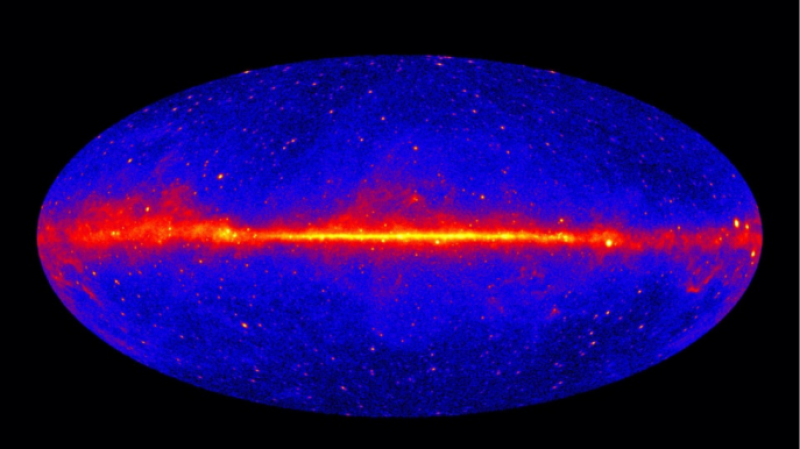- Indices tumble on both bourses amid broad-based sell-off |
- BNP Names 237 Possible Candidates for Polls |
- Bangladeshi leader of disabled people of world Dulal honoured |
- UN Report Warns Inequality Fuels Global Pandemic Vulnerability |
- Trump claims Russia, China secretly conduct underground nuclear tests |
Scientists Edge Closer to Proving Dark Matter Exists

Scientists Edge Closer to Proving Dark Matter Exists
Scientists believe they are moving closer to confirming the existence of dark matter — the invisible substance thought to make up more than a quarter of the universe — by studying a mysterious glow of gamma rays near the centre of our galaxy.
Everything visible in the cosmos, from stars and planets to people and machines, is composed of ordinary matter. Yet this accounts for only about 5% of the universe. Another 27% is believed to consist of dark matter, which neither emits nor reflects light, while the remaining 68% is attributed to dark energy — an even more mysterious force driving the universe’s expansion.
Although dark matter cannot be seen directly, scientists are certain it exists because of its gravitational influence on galaxies and galaxy clusters. A recent study has examined an excess of gamma rays detected by the Fermi Gamma-ray Space Telescope near the Milky Way’s core, offering new clues that may finally confirm dark matter’s presence.
Researchers have long debated two main explanations for these gamma-ray emissions. One theory suggests they are produced by colliding dark matter particles, while another attributes them to millisecond pulsars — rapidly spinning neutron stars that emit light across the electromagnetic spectrum.
A comprehensive new analysis, supported by advanced simulations, found that both explanations are equally plausible. The study concluded that gamma rays generated by dark matter collisions would produce the same signal as that observed by the Fermi telescope.
“Understanding the nature of dark matter, which pervades our galaxy and the entire universe, is one of the greatest challenges in physics,” said Professor Joseph Silk of Johns Hopkins University and the Institute of Astrophysics of Paris, one of the study’s authors. “Our key result shows that dark matter fits the gamma-ray data just as well as the neutron star hypothesis. We’ve increased the odds that dark matter has been indirectly detected.”
The researchers believe the upcoming Cherenkov Telescope Array Observatory, now being built in Chile, could help resolve the mystery when it begins operation as early as 2026. The new facility will be capable of distinguishing between gamma rays produced by dark matter and those emitted by pulsars.
“Because dark matter doesn’t emit or block light, it can only be detected through its gravitational effects,” explained Dr. Moorits Mihkel Muru, the study’s lead author from the University of Tartu and the Leibniz Institute for Astrophysics Potsdam. “Despite decades of research, no experiment has yet detected dark matter particles directly.”
The gamma-ray glow spans a region extending about 7,000 light-years around the Milky Way’s centre, which lies roughly 26,000 light-years from Earth. Scientists suggest that if dark matter particles are indeed colliding there, they would annihilate each other completely, producing gamma rays as a byproduct — a unique signature that could finally confirm one of modern science’s most elusive mysteries.

